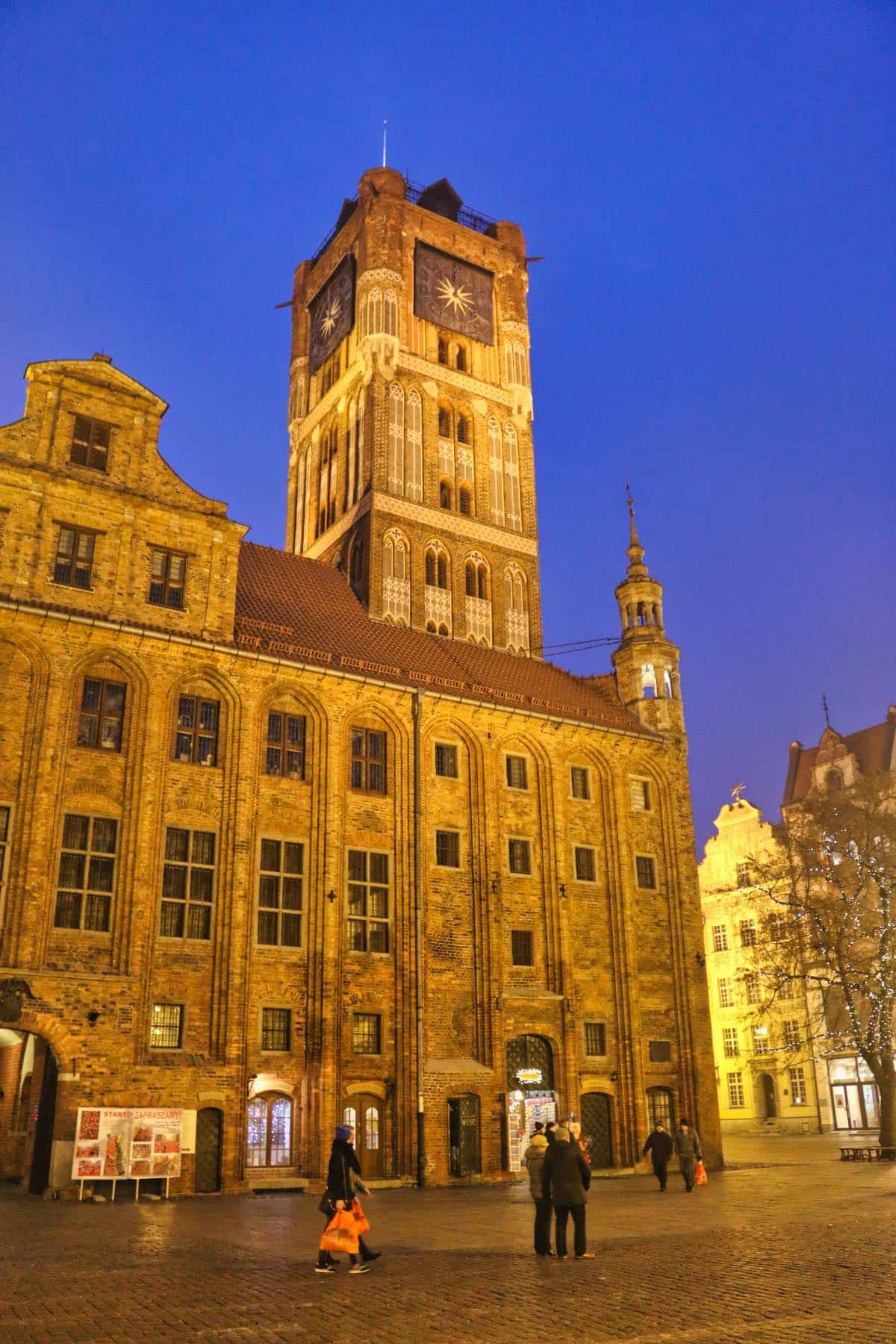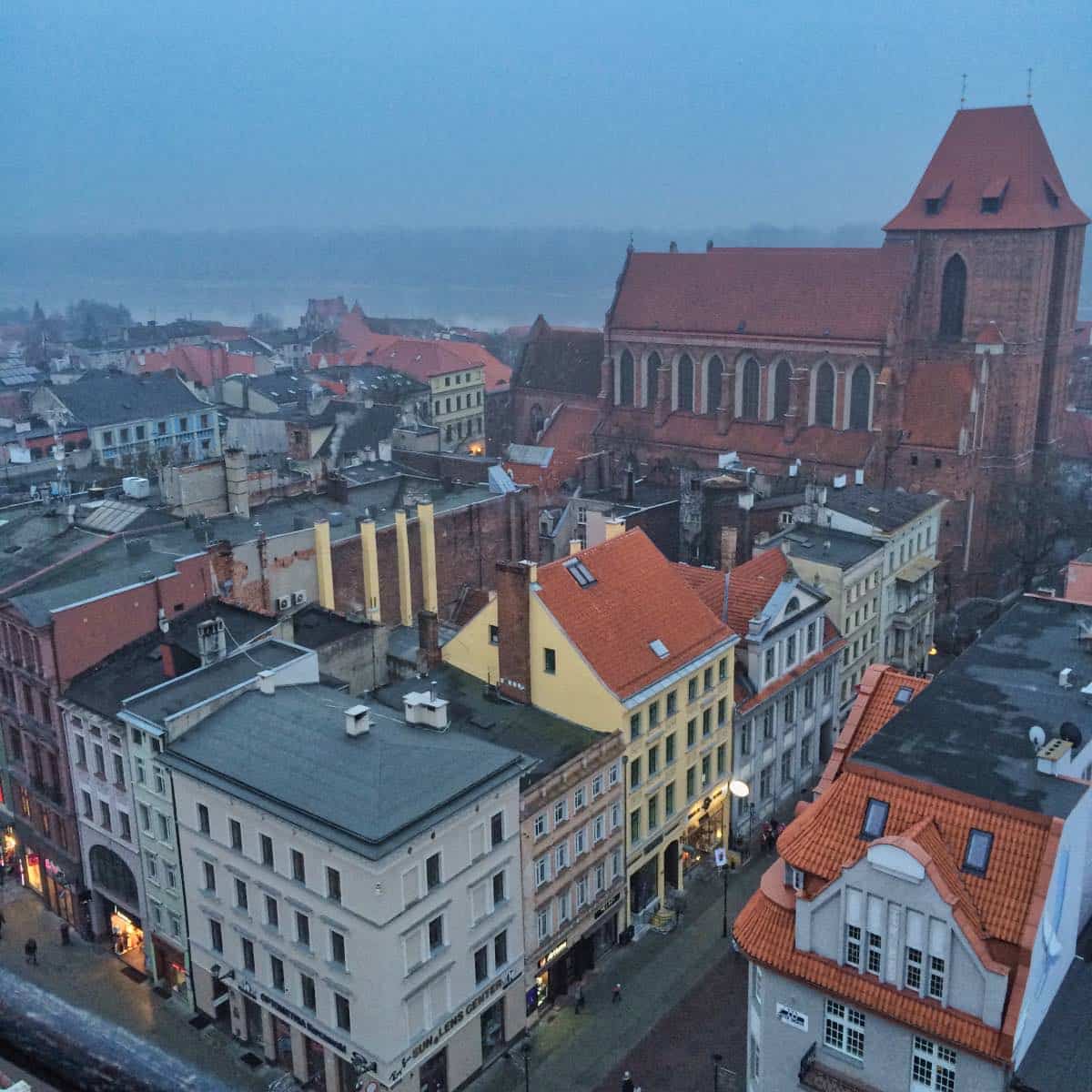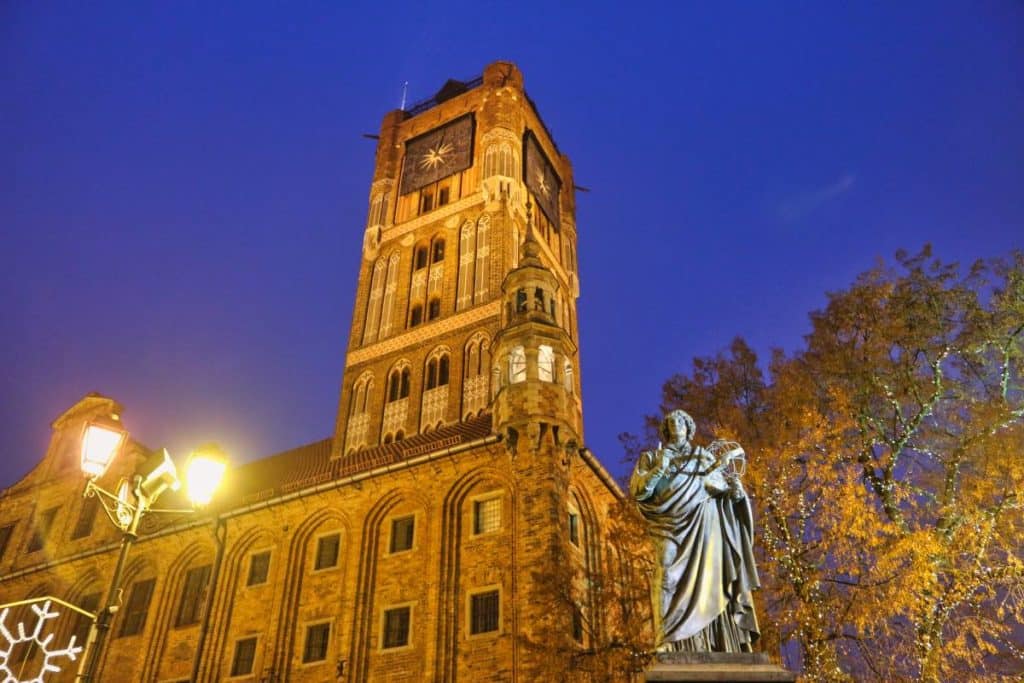Most people have heard of Warsaw, Krakow, Wroclaw or Gdansk. But what about Toruń? The former Hanseatic city of Toruń, also known as Thorn in German, is still rather an insider’s tip. Yet the city not only has a long history, but there are also dozens of things to see in Toruń. Reason enough to take a closer look at the city.
History of the city Toruń
Bereits seit dem 13. Jahrhundert besteht die Stadt Toruń. Gegründet wurde sie von Mitgliedern des Deutschen Ordens an der Weichsel. 1234 erhielt die Stadt das Stadtrecht – als erste Stadt in Preußen. Deutsche Siedler kamen zunächst vor allem aus Westfalen und bauten die Stadt auf. Die Stadt wurde jedoch bereits 1236 mehr als sieben Kilometer verlegt und dann endgültig an ihrer heutigen Stelle errichtet.
In the 14th century Toruń became a Hanseatic city – Königsberg, Gdansk and Elblag were also part of the Hanseatic League. Later the city became the scene of disputes between Prussia and the Teutonic Order. After the partition of Poland by Russia, Prussia and Austria, the city came to Prussia and became an important city near the border with the Tsarist Empire. After the First World War, Toruń became part of independent Poland and then, after a short German occupation from 1939 to 1945, finally became Polish again.
Things to see in Toruń
With its brick buildings, the city is reminiscent of other Hanseatic cities in Germany and appears similarly charming as, for example, Wismar, Stralsund or Gdansk. The importance of trade for the city is evidenced, among other things, by the warehouses where goods used to be stored.
Old town with city wall
The Old Town of Toruń has been a UNESCO World Heritage Site since 1997. The old town is very compact and you can easily explore it on foot. There are cobblestones everywhere and many of the 200 historic Gothic buildings house museums, cafes or restaurants and can be explored. The whole old town is surrounded by the medieval city wall, which has been preserved until today. Today you can partly walk on it around the city. There are a number of towers and buildings that are integrated into the city wall.

Town hall
It is the central building of the city and a real eye-catcher: The city hall at the Old Town Square is one of the most beautiful of its kind in the whole of Poland. For centuries, it has served as the seat of the city council and the mayor. It’s hard to believe that the Toruń City Hall has been here since the 14th century. In 1501, the Polish King Jan I Albert is said to have died of a heart attack here.
Supposedly, he had a weakness for the women of Toruń. And also the town hall itself, had to struggle hard. During the Swedish wars it was badly devastated and burned out. Traces of the fire can still be seen on some of the bricks. The tower of the town hall offers the most beautiful view of the city. It is worth climbing the 175 steps to the top.

Artus Manor
The Artus Manor is also located at the Old Town Market. Although the building is only from the 19th century, its neo-Gothic appearance fits perfectly into the old town. The building was erected by the St. George’s Brotherhood, an association of wealthy citizens of the city. The merchants’ guild wanted to gather like the knights of King Arthur’s Round Table – hence the name. Today, the building houses the city’s chamber orchestra and a cultural center.

Toruń Cathedral
As the largest church in the city, the cathedral has always played a weighty role in the life of the citizens of Thorn. Since the 14th century the children of the most important citizens were baptized here. The baptismal font of Nicolaus Copernicus is also located here and one could say that the said Polish king Jan I Albert lost his heart to Toruń, because in fact it is buried in the cathedral.
However, his heart certainly trembles to this day when, on rare days of the year, the bell Tube Dei (Trumpet of God) rings out. It is one of the most powerful bells in the region and a true masterpiece of bell-founding art. You also have a great view from the tower of the cathedral!
St. James Church
Even more beautiful than the cathedral is actually the Church of St. James. Originally, it was the parish church for the residents of the New Town. As a late Gothic hall church, it is one of the most unusual churches in the region. The church is cantilevered and is supported by buttresses, such as those found on Cologne Cathedral. It is dedicated to St. James and is a stop on the pilgrimage route from the Baltic to Santiago de Compostella. The double tower is one of the most visible Torun sights.

St. Mary’s Church
St. Mary’s Church is also one of the prominent Torun sights and is especially visible from the tower of the town hall. Amders than the Cathedral or St. James’ Church, however, St. Mary’s Church does not have a tower. The hall church was also the center of Protestantism in Poland for more than a century.

Leaning Tower of Toruń
And what would a medieval city be without a leaning tower? Thorn can easily keep up with it, because the Leaning Tower of Toruń doesn’t lean sideways only after the eighth glass of vodka. It leans more than 5 degrees and still 1.46 meters from the perpendicular, which is clearly visible. The reason for the inclination is quite simple: The ground is breaking away and could move even further.
Ruin of Toruń Castle
Once Toruń was an important seat of the Teutonic Knights, who ruled the destinies of East Prussia. Therefore, as early as the 13th century, Thorn Castle was built to consolidate this influence on Thorn as well. Since the castle was located directly on the border of the Kingdom of Poland with the lands of the Teutonic Knights, the castle was accordingly strongly fortified.
However, the neighborhood of the castle to the city was not exactly free of conflicts either, so that in 1545 the citizens of Thorne conquered and even destroyed the castle. In the centuries that followed, the ruins were considered a kind of garbage dump of the city. It was not until the 1960s that the castle walls were uncovered at all. Quite funny is the fact that the best preserved tower is the former latrine tower.
Fortress Thorn
One of the most massive fortress structures in the region still stands in the city. The Toruń Fortress was built by the Prussians between 1872 and 1894. However, it never really came into use, so its enormous construction cost of 60 million gold marks can be seen as a pure waste. During the construction period, about 200 large fortifications were built here, including seven main forts, six middle forts, six artillery batteries, 32 infantry bunkers, and 52 artillery and ammunition bunkers around the city. However, at least you can explore the Thorn fortress as a tourist to this day. Therefore, the city of Thorn converted the former “Bunker B66” of the former Culmer Tor barracks into a museum of Thorn Fortress, where you can learn more about the buildings of the fortress and its history.
But at least you can still explore the fortress as a tourist. Therefore, the city of Thorn converted the former “Bunker B66” of the former Culmer Tor barracks into a museum for the Thorn Fortress, where you can learn more about the buildings of the fortress and its history.

Copernicus in Toruń
Copernicus is still the most famous son of the city. No wonder that in the city not only a monument on the market was dedicated to him. There are numerous museums and in his birthplace (ul. Kopernika 17), where he was born in 1473, you can learn more about the astronomer and researcher.
Copernicus is best known for his theory of a heliocentric view of the world, that is, the theory that the Earth revolves around the Sun. After studying in Krakow, he went to Formbork and worked there before moving to Bologna in Italy. He traveled frequently between Poland and Italy and was a true globetrotter of his time, but never forgot his hometown. The people of Toruñ are grateful to him to this day and honor him in every corner of the city.
Gingerbread in Toruń
If someone wanted to build a city out of gingerbread, Toruń would probably be the best model for it. Because in fact there are more gingerbread bakeries here than anywhere else in Poland or possibly in the world. The cinnamon-rich bread has been baked here since the time of the Crusades, and there are different recipes from store to store. Therefore, if you visit Toruń, there is no way around trying the famous gingerbread.
The most famous store is Kopernik Toruń (ul. Żeglarska 24). But there are many other stores where you can taste gingerbread everywhere. You can learn more about the history of gingerbread at the Gingerbread Museum (Strumykowa 4), and there is a different kind of walk of fame in front of the Artus Court, where the best gingerbread bakers are honored. And if you really wanted to rub yourself with gingerbread, you can buy gingerbread soap in Dom pod Jednorożcem, for example.
The 5 best things to do in Toruń
Bake gingerbread at the Gingerbread Museum
It is confusing at first, but in fact in Toruń they are so convinced of gingerbread that Torun people will let you bake gingerbread with them. Not only in the Gingerbread Museum (Strumykowa 4), but also in the Museum of Living Gingerbread (Rabiańska 9). Here you can learn all the secrets of Toruń’s gingerbread bakers.
Look at the stars in the planetarium
It should be obvious that in the city of Copernicus you should also visit a planetarium. How appropriate that Toruń offers you just that. In Toruń Planetarium, all shows are multilingual, so you can listen to it in English.
Be drilled in the bunker Wisła
If you want to experience what air war feels like, you can get the full drill in Bunker Wisła. Here you will be drilled and trained how to protect yourself in case of an air attack. Achtung!
Have a party in the GDR
The East German GDR is not dead after all! It still exists in Toruń in the form of the NRD club. In the stylish interior, made to look like the GDR and the People’s Republic of Poland, you can spend a relaxed or eventful evening in corona-free times. Definitely a real Toruń insider tip!
Experience stories in the House of Legends
Especially with children, it is worth visiting the House of Legends, where some of the city’s legends are brought to life. In this combination of museum and theater, the stories of old Thorn are re-enacted for you!

Best time to visit Toruń
Summer is wonderful in Toruń and due to the Vistula River the city has almost a maritime flair. However, if you like it a bit cooler, you can come to the city in April and May or September and October. The months are generally good for city trips in Poland.
How to get to Toruń
How to get to Toruń by car
Toruń is located directly on the A1, which is one of the most important highways in Poland and connects Upper Silesia with Gdansk. In addition, there is also a direct expressway to Warsaw with the national road S-10.
How to get to Toruń by train
There are train connections to all major cities in Poland.
How to get to Toruń by plane
Toruń itself does not have an airport. But from the neighboring city of Bydgoszcz there are direct flight connections to many European cities.
Where to eat and drink in Toruń?
Pierogarnia Stary Toruń
Pierogi are a Polish national dish. The filled dumplings are therefore an absolute must for any visit to Toruń. They can be filled with all kinds of ingredients – from potatoes to meat to more exotic things like salami or apple. We found the best pierogi at Pierogarnia Stary Toruń. Address: Most Paulinski 2
Book tips about Toruń and Poland
Toruń itself is an insider’s tip so far, so there are no travel guides to the city itself. Nevertheless, Toruń is definitely represented in other travel guides and there are also some interesting travel books about Poland itself.

